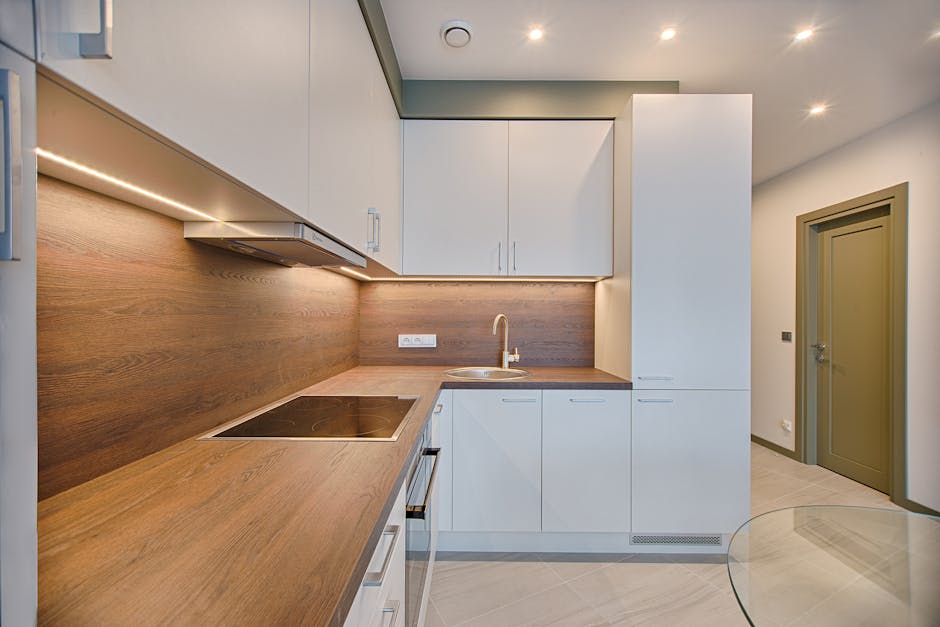Remodeling a kitchen in a mobile home presents unique obstacles, particularly if a full-scale demolition isn’t feasible or desirable. Often, homeowners seeks smart and cost-effective ways to refresh their culinary spaces without completely gutting the existing structure. This calls for ingenuity and an awareness of the specific considerations involved in mobile home construction. Let’s explore how to create a beautiful and functional mobile home kitchen while avoiding a disruptive overhaul. It would save money and time!
Understanding Mobile Home Construction Differences
Before plunging into remodel design decisions, it's crucial to appreciate how mobile homes differ from traditionally built houses. Mobile homes typically have thinner walls, making plumbing and electrical modifications more complex. The frames structure is built on wheels for transport. Plus, there could be weight limitations to consider, particularly if you're adding new appliances or materials. Understanding these constraints is paramount to a successful, non-destructive remodel.
Weight Restrictions: A Critical Factor
Weight limitations are a real concerns. Excessive weight could cause structural issues. Consider lightweight alternatives for countertops (laminate, butcher block), flooring (luxury vinyl tile), and cabinetry (particleboard with veneer). Avoid heavy stone countertops or dense hardwood floors.
Plumbing and Electrical Considerations
Mobile home plumbing and electrical systems are often designed with space and cost efficiency in mind. Moving plumbing or electrical lines can be more challenging and expensive compared to standard homes. Work within the existing layouts where possible. This can reduce construction time and expenses.
Cosmetic Upgrades: High Impact, Low Effort
Sometimes, the most impactful change comes from purely cosmetic updates that can make a world of difference. This type of change doesn't involve major structural alterations, and the price tag doesn't have to be scary.
Painting and Refacing Cabinets
A fresh coat of paint can miraculously change the look of existing cabinets. Choose a color that brightens the space and complements your overall aesthetic. Alternatively, consider refacing cabinets by replacing the doors and drawer fronts. This offers a more dramatic update without replacing the entire cabinet structure. Use special primer before painting laminates. Be sure to choose a paint and primer that are compatible.
New Hardware and Fixtures
Swapping out old cabinet knobs, pulls, faucets, and light fixtures adds a touch of elegance. Look for hardware that matches your desired style, from modern and minimalist to rustic and traditional. Consider these as jewlery for the kitchen. It will catch peoples attention for sure.
Backsplash Refresh
A new backsplash can introduce color, texture, and personality to your kitchen. Options include peel-and-stick tiles, subway tiles, or even paintable wallpaper. Peel-and-stick tiles are an amazing project for even the beginning DIY'er.
Smart Storage Solutions: Maximizing Space
Mobile home kitchens often lack adequate storage space. Creative storage solutions can dramatically improve functionality without requiring extensive renovations.
Pull-Out Shelves and Organizers
Install pull-out shelves inside existing cabinets to make it easier to access items at the back. Drawer organizers keep utensils and cookware neatly arranged.
Vertical Storage
Utilize vertical space with wall-mounted shelves, spice racks, and hanging pot racks. These additions free up valuable counter and cabinet space.
Rolling Kitchen Islands or Carts
A rolling kitchen island or cart provides extra counter space, storage, and can be easily moved around as needed. These are available in a range of sizes and styles to fit your space and décor.
Countertop and Flooring Updates: Style Without Demolition
Replacing countertops and flooring can greatly enhance the look and feel of your kitchen. However, it is smart to find some ways that dont involve tearing everything down.
Countertop Overlays
Instead of completely replacing countertops, consider countertop overlays. These thin layers of material (such as epoxy or laminate) are applied directly over existing surfaces, giving them a fresh new look.
Luxury Vinyl Tile (LVT) or Sheet Vinyl Flooring
LVT and sheet vinyl flooring are excellent choices for mobile home kitchens because they are lightweight, durable, water-resistant, and easy to install. They come in a variety of styles and patterns that look like hardwood or tile.
Appliance Upgrades: Functionality and Aesthetics
New appliances can improve the function and aesthetic appeal of your kitchen.
Energy-Efficient Appliances
Upgrade to energy-efficient appliances to save money on utility bills and reduce your environmental footprint. Look for models with the Energy Star label. These labels ensure the appliances meet high energy efficiency standards.
Space-Saving Appliances
Consider compact or multi-functional appliances like a microwave oven that fits above your existing range.
Lighting Improvements: Brightening the Space
Lighting plays a vital role in creating a welcoming and functional kitchen.
Under-Cabinet Lighting
Install under-cabinet lighting to illuminate countertops and make food preparation easier. LED strip lights are a popular and energy-efficient option.
Pendant Lights or Track Lighting
Add pendant lights over the island or breakfast bar for focused lighting. Track lighting is versatile and can be adjusted to highlight different areas of the kitchen.
DIY vs. Professional Help: Assessing Your Skills
Decide which tasks you can handle yourself and which require professional assistance. DIY projects can save money, but improper installations could lead to issues later.
When to Hire a Professional
Hire a licensed contractor for electrical work, plumbing modifications, or any structural changes. These tasks require specialized knowledge and experience to ensure safety and compliance with building codes. Electrical and plumbing work can be dangerous, and you don't want to have regrets about doing a project like that yourself.
DIY Projects for Beginners
Painting, replacing hardware, installing peel-and-stick tiles, and adding storage organizers are examples of DIY projects that most homeowners can handle. Take your time, follow instructions carefully, and don't be afraid to ask for help from friends or family if needed.
Budgeting and Planning: Setting Realistic Expectations
Before starting any remodeling project, create a detailed budget and plan. Prioritize your needs and wants, and research the cost of materials and labor.
Setting a Budget
Determine how much you can realistically afford to spend on your kitchen remodel. Be sure to include a contingency fund for unexpected expenses. It is always smart to leave an extra bit of money for unexpected things you might find.
Prioritizing Your Needs
Make a list of the most important improvements you want to make. Focus on these items first and then consider adding other upgrades as your budget allows.
Remodeling a kitchen in a mobile home without a complete demolition requires a strategic approach. By focusing on cosmetic upgrades, smart storage solutions, thoughtful appliance choices, and updated lighting, you can transform your kitchen into a stylish and functional space that meets your needs and budget. Be sure to carefully consider weight limitations, plumbing, and electrical considerations specific to mobile homes. Plan your work well and always stay safe!

